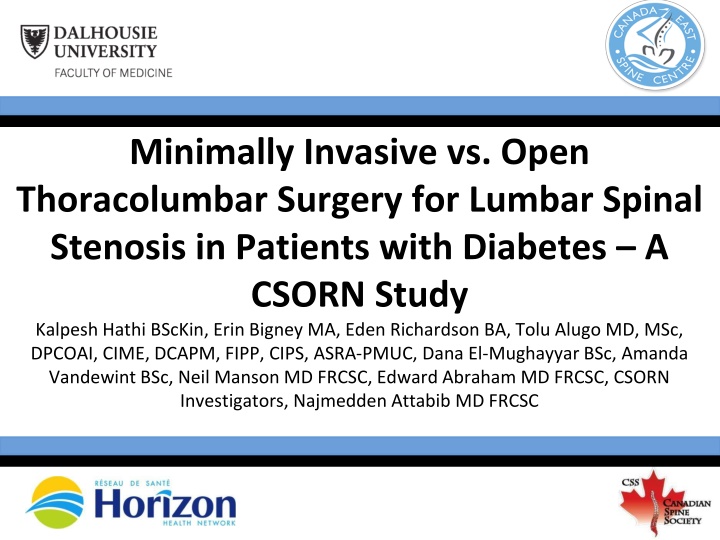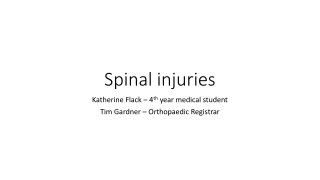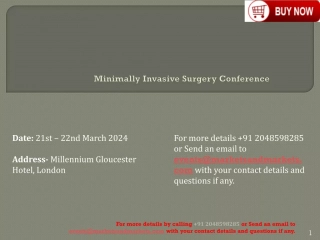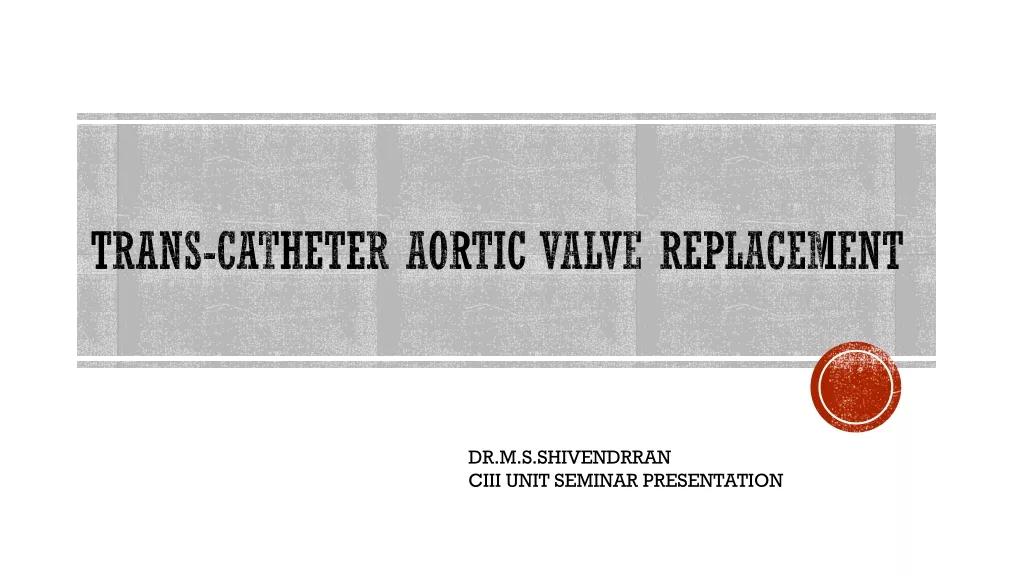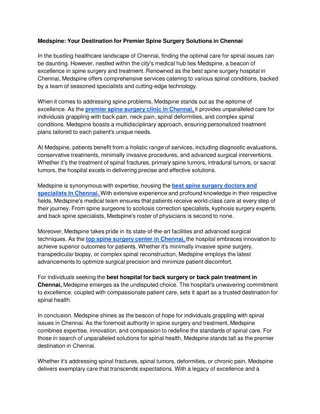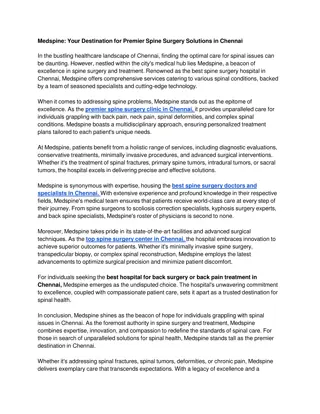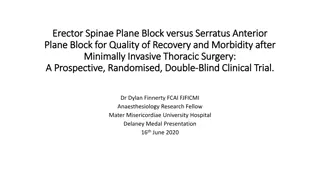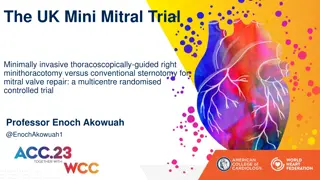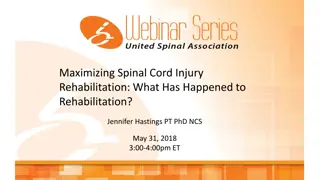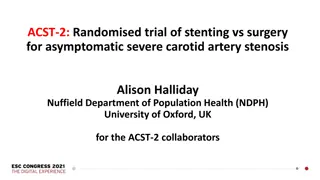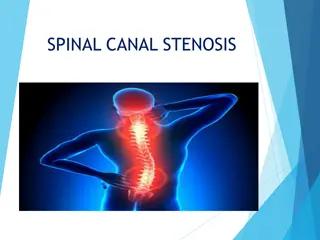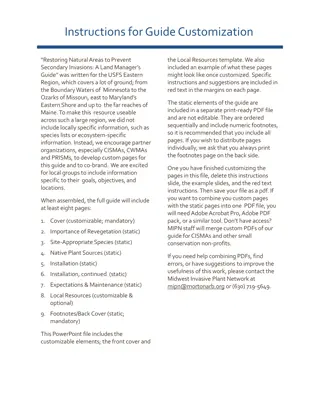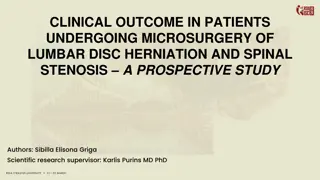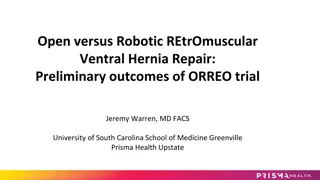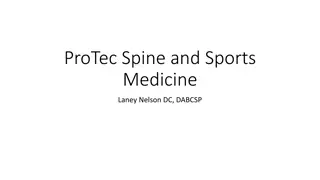Minimally Invasive vs. Open Thoracolumbar Surgery for Lumbar Spinal Stenosis in Patients with Diabetes
Patients with diabetes often face challenges post spine surgery. This study compares outcomes of minimally invasive vs. open surgery for lumbar spinal stenosis in diabetic patients, highlighting benefits such as reduced blood loss and shorter hospital stays with MIS approaches.
Download Presentation

Please find below an Image/Link to download the presentation.
The content on the website is provided AS IS for your information and personal use only. It may not be sold, licensed, or shared on other websites without obtaining consent from the author.If you encounter any issues during the download, it is possible that the publisher has removed the file from their server.
You are allowed to download the files provided on this website for personal or commercial use, subject to the condition that they are used lawfully. All files are the property of their respective owners.
The content on the website is provided AS IS for your information and personal use only. It may not be sold, licensed, or shared on other websites without obtaining consent from the author.
E N D
Presentation Transcript
Minimally Invasive vs. Open Thoracolumbar Surgery for Lumbar Spinal Stenosis in Patients with Diabetes A CSORN Study Kalpesh Hathi BScKin, Erin Bigney MA, Eden Richardson BA, Tolu Alugo MD, MSc, DPCOAI, CIME, DCAPM, FIPP, CIPS, ASRA-PMUC, Dana El-Mughayyar BSc, Amanda Vandewint BSc, Neil Manson MD FRCSC, Edward Abraham MD FRCSC, CSORN Investigators, Najmedden Attabib MD FRCSC
Background Patients with diabetes tend to have worse outcomes following spine surgery. Minimally invasive surgical approaches (MIS) for the lumbar spine are associated with less soft tissue damage and favorable peri-operative outcomes. MIS compared to OPEN surgery for patients with diabetes and lumbar spinal stenosis (LSS) has not yet been studied.
Objectives Compare outcomes of patients with diabetes undergoing MIS vs. OPEN lumbar decompression alone for LSS. Compare outcomes of patients with diabetes undergoing MIS vs. OPEN lumbar decompression with fusion for LSS.
Results Decompression Alone MIS (N=58) OPEN (N= 58) P- Value Mean SD Mean SD Blood Loss (mL) 82.27 121.81 182.04 208.83 0.002* OR Time (mins) 93.15 33.38 99.82 37.46 0.325 LOS (Days) 1.30 1.82 2.45 2.81 0.008* % of Patients who had an AE 36.2% - 29.3% - 0.429 Infection/Wound Drainage (%) 1.7% - 0% - - Decompression with Fusion MIS (N= 54) OPEN (N= 54) P- Value Mean SD Mean SD Blood Loss (mL) 230.0 176.74 474.23 369.10 0.001* OR Time (mins) 201.51 65.10 186.49 71.56 0.270 LOS (Days) 4.19 3.08 5.42 3.33 0.026* % of Patients who had an AE 18.5% - 42.6% - 0.007* Infection/Wound Drainage (%) 1.9% - 5.6% - - * = p < 0.05
Results: mODI Decompression with Fusion Decompression Alone * = p < 0.05
Results: NRS Back Decompression Alone Decompression with Fusion * = p < 0.05
Results: NRS Leg Decompression Alone Decompression with Fusion * = p < 0.05
Conclusions MIS approaches showed significantly less blood loss, shorter length of stay in hospital, and less patients with adverse events. MIS decompression with fusion resulted in significantly lower ODI and NRS back pain at 1 year follow-up. MIS approaches offer advantages for patients with diabetes undergoing decompression with fusion for LSS.
